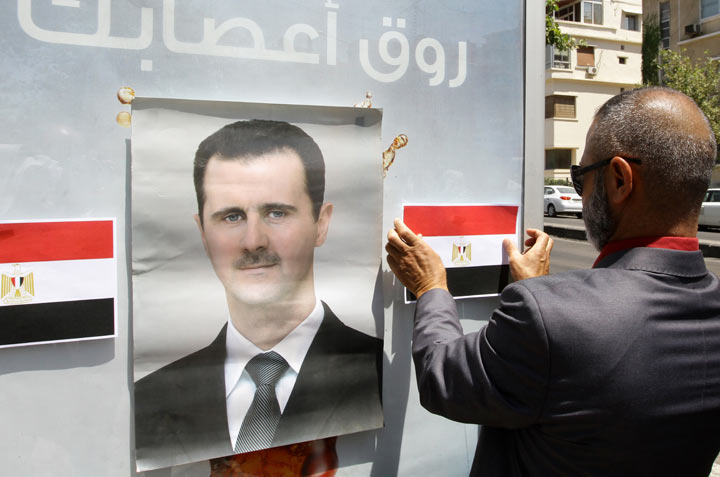BEIRUT – Backed by Lebanese Hezbollah militants, Syrian troops unleashed some of the civil war’s heaviest bombardments on the central city of Homs on Friday, pounding opposition-held areas with artillery and airstrikes for the sixth straight day, activists said.

In Geneva, the U.N. agency for human rights said it is “extremely concerned about the human rights and humanitarian impact” of the government offensive in Syria’s third largest city.
Homs is the latest target of a series of government offensives aimed at driving rebels out of areas they control.
A city of about 1 million people, it has been an opposition stronghold since the early days of the uprising against President Bashar Assad. Mass Arab Spring-inspired protests there, starting in early 2011, brought repeated army offensives onto the city. Hundreds of people were killed and thousands driven from their homes.
The government now controls much of Homs, though several neighbourhoods in the centre are still opposition strongholds. Building on its capture of the strategic town of Qusair between the Lebanese border and Homs last month, the army launched an offensive Saturday, battling rebels in the old part of Homs and the northern district of Khaldiyeh, where fighters are entrenched.
“It appears the regime wants to take Khaldiyeh, no matter what the price is,” said Tarek Badrakhan, who is based in Khaldiyeh. He said troops are focused on taking the district because from there, they could cut off rebel units in their other strongholds of Old Homs and the areas of Jouret el-Shayah and Qusour. Badrakhan was speaking to The Associated Press via Skype.
He said there were two airstrikes on Khaldiyeh early Friday. Army troops, pro-government militiamen and members of Lebanon’s Hezbollah militant group are shelling Khaldiyeh from three sides with rockets, tank and mortars shells. The activist said government forces are facing strong resistance from the rebels and have not advanced far in the six-day battle.
Hezbollah fighters were instrumental in helping Syrian troops capture Qusair last month. The group has not confirmed its troops were fighting in Homs, as the activists claim, and the reports could not be independently verified.
The Syrian National Coalition appealed to the United Nations and Western countries that have supported the opposition in Syria’s civil war “to intervene immediately” and provide food and medicine to the besieged, rebel-held areas of Homs and in Daraa in the south, where the uprising against Assad’s regime began March 2011.
“The areas under attack in Homs have been cut off from the rest of the world and suffer from an urgent shortage of medicine and food,” the SNC’s statement said Friday, appealing to its Western backers to support rebel units and provide them with more sophisticated weapons.
Meanwhile, the office of the High Commissioner for Human Rights Navi Pillay said in a statement Friday the number of civilians trapped in the heavy fighting in and around Homs is believed to be between 2,500 and 4,000. Shortages of food, water, medicine, electricity and fuel in besieged areas are severely affecting civilians, including women and children.
Recent reports suggest that armed opposition groups are operating inside residential areas, increasing the risk for civilians, the statement said.
The appeal by the Syrian National Coalition came as opposition leaders are meeting in Istanbul to elected new leaders, including an interim government that will try and govern territories under opposition control in Syria.
More than 93,000 people have been killed in the conflict that began as peaceful protests but turned into an armed revolt after opposition supporters took up arms to fight a brutal government crackdown.
In recent months, rebels fighting in the north have received more powerful weaponry, including anti-tank missiles and surface-to-air missiles, likely supplied by Qatar and Saudi Arabia. The U.S., which has provided opposition fighters with non-lethal aid, said recently it was willing to supply them with arms, but has been reluctant to do so for fear they could end up in the hands of radical Islamic groups that have been the most effective fighting force on the opposition’s side.
In Rome, United Nation’s food agencies said that Syria’s food security situation has significantly deteriorated over the past year, leaving at least 4 million Syrians unable to produce or buy enough food to survive.
—
Associated Press writer Bassem Mroue contributed to this report.



Comments